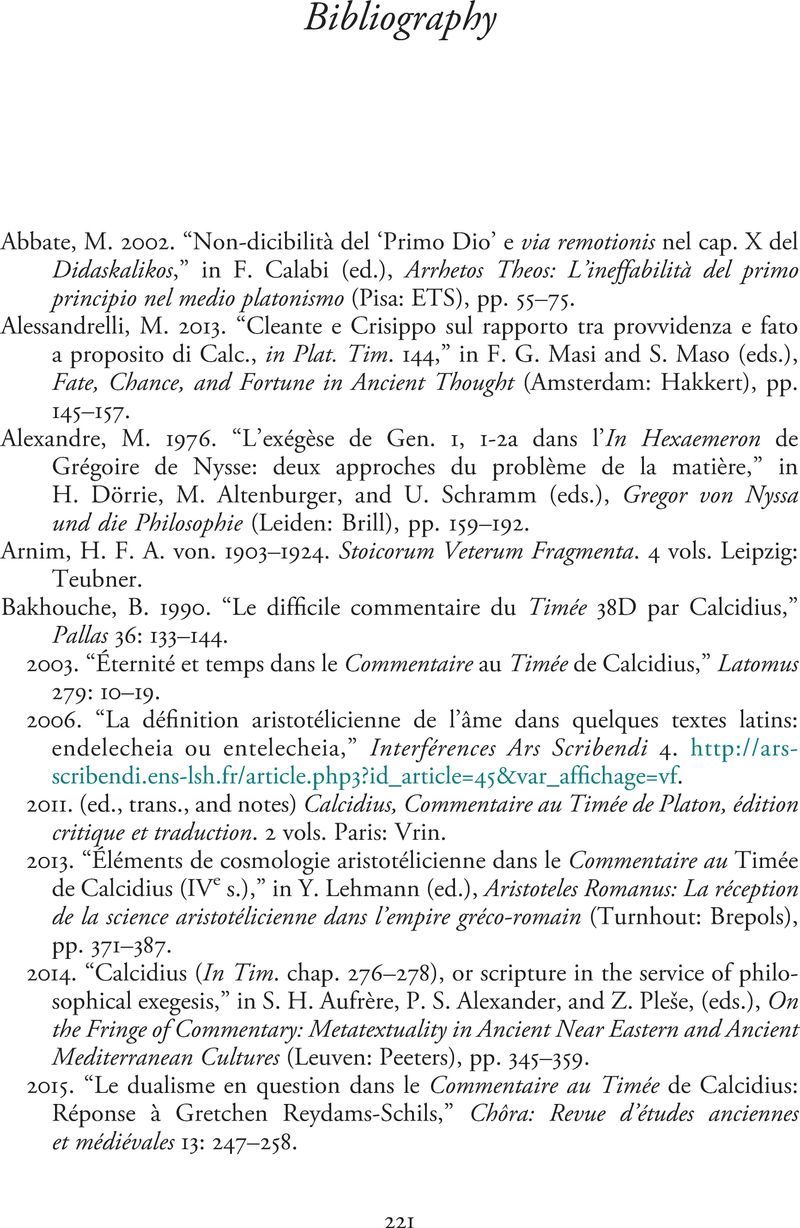Bibliography
Published online by Cambridge University Press: 18 September 2020
Summary

Information
- Type
- Chapter
- Information
- Calcidius on Plato's TimaeusGreek Philosophy, Latin Reception, and Christian Contexts, pp. 221 - 232Publisher: Cambridge University PressPrint publication year: 2020
